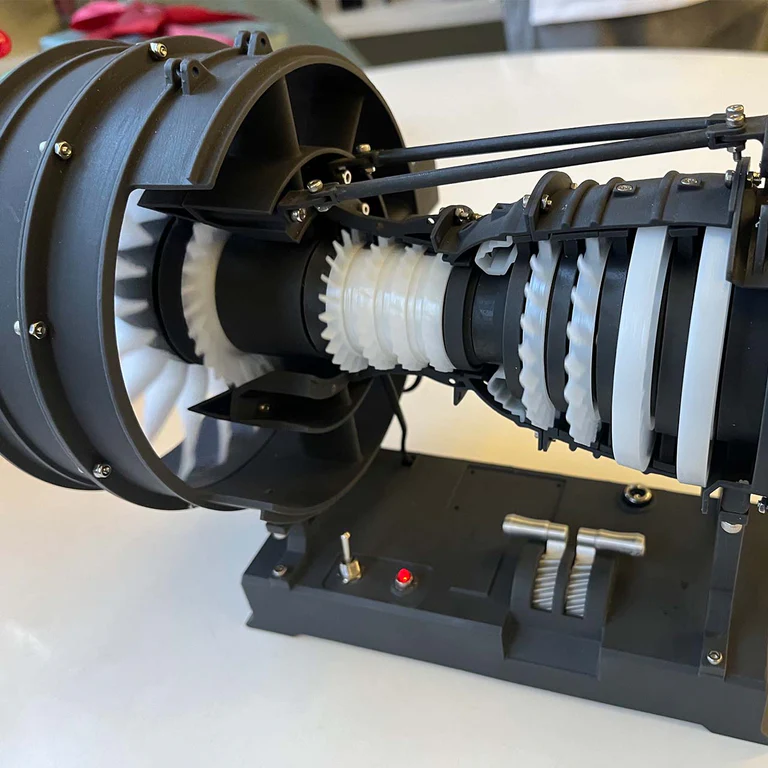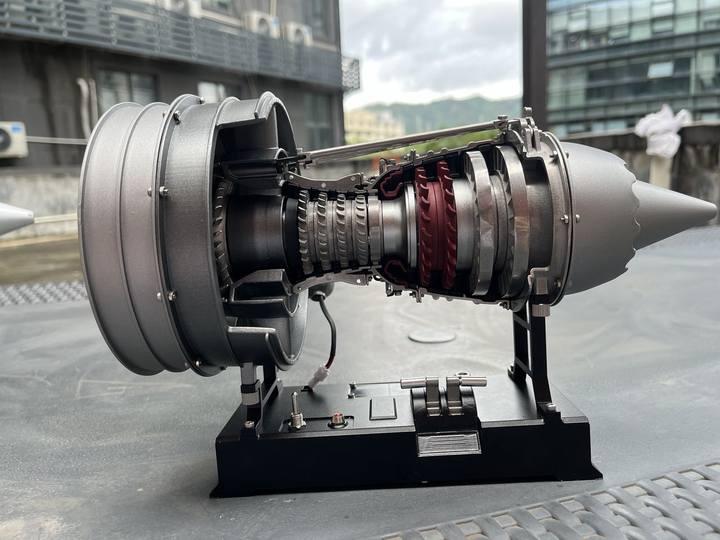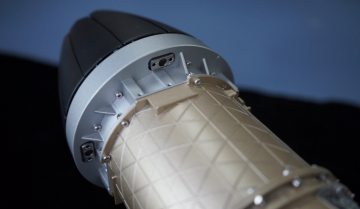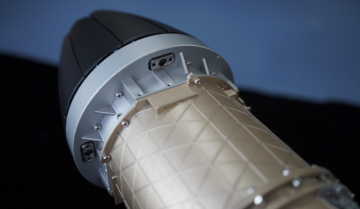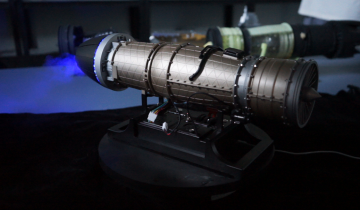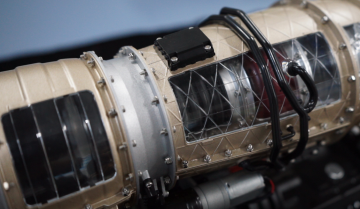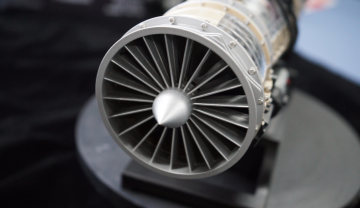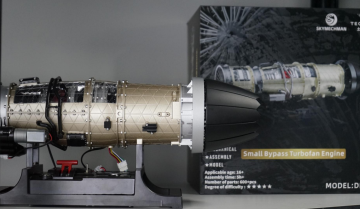
Potaka
Members-
Posts
45 -
Joined
-
Last visited
Content Type
Profiles
Forums
Events
Gallery
Everything posted by Potaka
-
You should pad on 'em. That's cool.
-
You did a great job.
-
The video is so well shot and the model is painted perfectly
-
Hey everyone, I recently got my hands on two versions of the TECHING DM121 1:12 cutaway turbofan engine – one 3D printed, and one full metal. I’ve built both, played around with them a bit, and also took some photos and short clips to compare. Thought I’d share my experience and hear what you guys think – if it were you, which one would you pick? (3D printed Version) (Metal Version) The 3D printed version is really light and easy to carry around, which makes it perfect if you want to take it to a club or classroom demo. It’s also more forgiving during assembly – small misalignments are easy to fix with some sanding. It runs quietly, too, which is nice if you’re showing it off to people without scaring them with mechanical noise. There’s also lots of potential for painting or customizing it afterward, so it’s fun to experiment with. stirlingkit-dm121 plastic video-2-metal-vs-3d-printed-which-one-s-right-for-model-enthusiasts.mp4 The metal version, on the other hand, feels super solid in hand. Once it’s fully assembled, it really looks like a proper engine on your shelf. The edges are sharp, the shine under the light is beautiful, and the mechanical sound when it runs is far more immersive. Honestly, for what you get, the metal version isn’t even that expensive – I was pleasantly surprised it doesn’t cost a lot more than the 3D printed one, considering how premium it feels. It’s definitely the type of kit you’d want to keep in a collection or display long term. 启动展示.mp4 For maintenance, the printed version benefits from some sanding, primer, and paint to get a nice finish, while the metal one mostly just needs occasional wiping and a bit of lubricant on the gears or shafts. In terms of budget and purpose, the 3D printed kit is more affordable and great if you want to tinker with it or bring it to a demo, while the metal version feels like the “final form” you’d proudly put on display. Now I’m torn between the two. The metal one looks amazing on a shelf, but the 3D printed one is fun to play with and much easier to carry around. If you could only keep one, which would you go for? Do you care more about the weight and realism, or the lighter, more customizable nature of the printed kit? Also, if anyone has tips for sanding or painting the 3D printed parts, or tricks for maintaining the metal version, I’d love to hear them. And if you have any ideas on the DM121, like adding lights, custom paint jobs, or stands, please don‘t hesitate to tell me.
-
- 1
-

-
- metal parts
- plastic models
-
(and 1 more)
Tagged with:
-
Hey folks, I finally got my hands on the TECHING DM119 Twin-Spool Turbofan Engine model kit and spent the last few days putting it together. This thing is a real engineering marvel – over 1000+ metal parts, working fan blades, gearbox, and you can actually see the spools spin when powered up. The assembly was challenging but super satisfying, almost like working on the real thing in miniature. What impressed me most is the detail of the core engine. You can really learn how air goes through the fan, compressor, combustion, and turbine stages. For anyone into aviation models or just mechanical builds, this is one of the coolest kits I’ve ever tried. Here is the picture: Curious – has anyone here built other engine models (jet or piston)? Would love to see your projects too!
-
Well said! I think both approaches are valid — whether it’s the thrill of building or the satisfaction of curating a collection, the passion really shows. I personally enjoy the building process, but I also admire collectors who assemble a beautiful display of rare models. Do you ever find yourself tempted to build a model you initially bought just to collect? I’ve caught myself doing that more than once — a rare find that ends up on my workbench instead of the shelf!
-
Thanks for the detailed breakdown! I totally agree — building plastic kits is a very different experience from collecting diecast cars, even if both involve miniatures. I’ve always admired those Master Craftsman pieces — the level of detail and patience required is just incredible.
-
Wow, that’s quite a story! 😲 It’s amazing how some of these vintage toys like Buddy L have appreciated so much over the years. $6,500 for a 4-piece train set is insane! I love that you and your wife go antiquing together — it must be fun stumbling across hidden gems. Since you build models too, do you ever try to blend that with vintage finds, or do you keep them completely separate? I could imagine a metal Buddy L truck sitting alongside a finely detailed scale model — the contrast would be incredible.
-
That’s really cool! Buddy L toys definitely have a special place in history — those stamped steel trucks were built to last. Thanks for sharing the link. It’s interesting how collectibles can overlap with models in terms of craftsmanship and nostalgia. Do you also build scale models, or are you more into vintage toys like Buddy L?
-
I’ve been thinking about a question while building models: fundamentally, what are the differences between plastic and metal models? Which material is more popular, and why? From my experience so far: Plastic models are easier to assemble, offer rich detail, and are lightweight—great for complex shapes. They’re also easier to paint, sometimes producing unexpectedly good results. Metal models feel more solid and have a better tactile quality. Their parts are often more precise compared to plastic models. Many metal models also feature complex moving parts, and some can even actually operate, which gives a great sense of accomplishment. For me, I personally prefer metal models, since I’m not very good at painting and would rather have a complete piece right after assembly. I’ve built T700 and DM135 in metal, and WS-15 in plastic. In my opinion, metal models are generally much more detailed and meet my standards for collection better. (Disclaimer: That’s just my humble opinion. 😃 If you have different thoughts or experiences, I’d love to hear them — do you lean more toward metal or plastic kits, and why?) What about you? What factors do you usually consider when choosing model materials? Which do you think is better for beginners or for collectors?
-
Anybody ever build one of these
Potaka replied to junkyardjeff's topic in General Automotive Talk (Trucks and Cars)
It’s my first time seeing this. It looks really old, full of traces of history. -
Recently, I assembled a 1/10 scale turbofan engine model (Teching DM135). I just finished it and took some photos, which are at the end of this post. I'd like to share it here and see if anyone else is also interested in this kind of mechanical structure. The engine is based on the F135 turbofan used in the F-35 fighter jet, although the model itself doesn't specifically label that. The whole kit includes more than 600 parts, mostly made of metal. From the front fan blades to the high- and low-pressure turbines in the back, every section can rotate. After assembly, you can manually turn the shaft, and the entire airflow path drives the blades to move. Seeing the mechanical linkage for the first time felt really satisfying. The manual was much clearer than I expected, and the packaging was quite well-organized. But the screws are really tiny, so I strongly recommend using a magnetic screwdriver to avoid losing parts. During assembly, there are some things to keep in mind: the small parts are especially tiny, so having a magnetic screwdriver and a storage box is a must; each component needs to be precisely aligned—if not, the rotation can get stuck. I suggest turning each section manually after assembling it to check if it moves smoothly. Also, the manual is detailed, but you shouldn't skip any steps or miss small parts. When tightening screws, be careful not to use too much force, as metal parts can be damaged. The Teching DM135 model is very well-designed. The parts are finely made, with a solid metal texture and high detail accuracy. What I find most interesting is the realistic mechanical linkage. The airflow structure is mimicked through rotating components, and watching it move is quite satisfying. The manual was better than I expected, with clear illustrations that made it easy to follow, almost like assembling the real thing. It wasn't easy, though—it took me about 10 hours to finish—but the final mechanical effect made it totally worth it. Once powered on, the engine can actually run, and it even has lighting effects, which I've never seen in other model kits. I especially love the semi-cutaway design, which lets me see the internal movement clearly. Overall, I think it's a fantastic experience.
